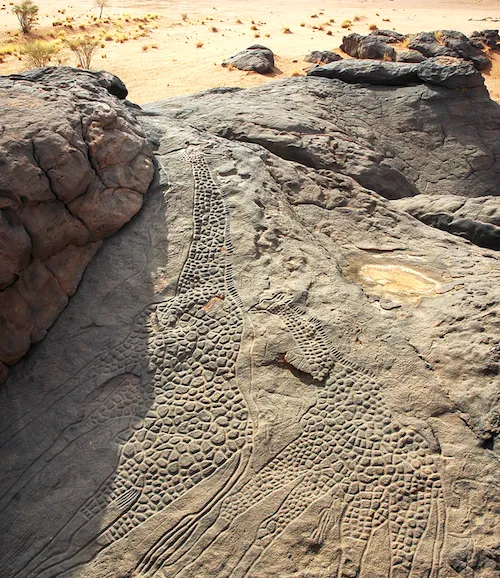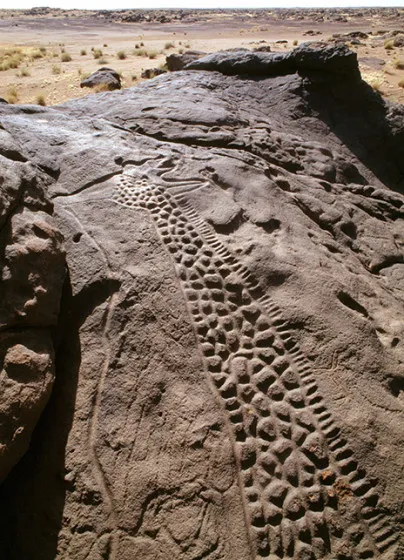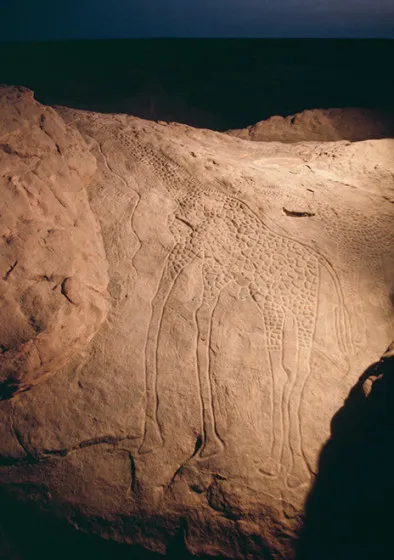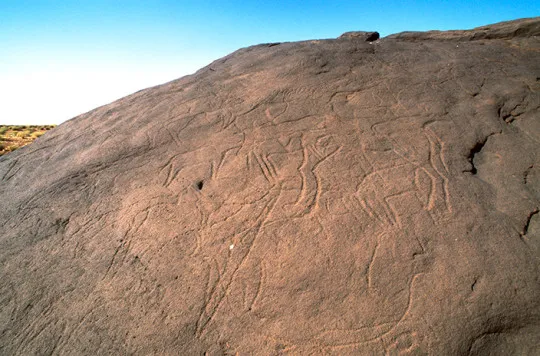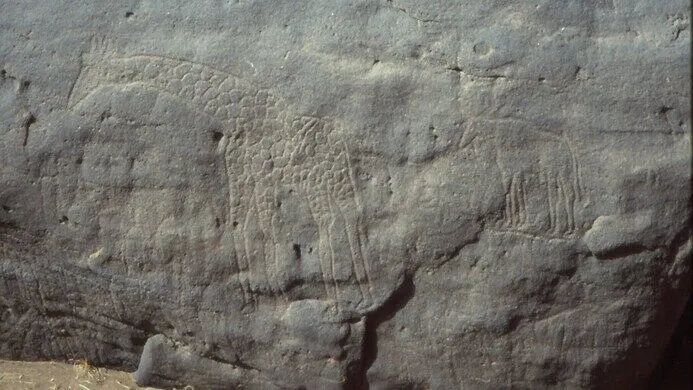Have you ever heard of Dabous Giraffe 🦒 in Niger?
Dabous is located in north-eastern Niger, where the Ténéré desert meets the slopes of the Aïr Mountains. The area has been part of the trans-Saharan caravan trade route traversed by the Tuareg for over two millennia, but archaeological evidence shows much older occupation in the region dating back 8,000 years. More recently, it has become known to a wider global audience for its exceptional rock art.
Information source
Recorded in 1987 by French archaeologist Christian Dupuy, two remarkable life-size engravings of giraffe have generated much interest due to the size, realism and technique of the depictions.
His discovery completely changed the chronology of human history around the world.
The Dabous Giraffes are a Neolithic petroglyph in the aerial massif of Niger by an unknown artist. Estimated completion 8000 BC. The sculpture is 20 feet tall and consists of two giraffes carved into Dabous Rock with a wealth of detail. Dabous Rock sits on the slope of a small sandstone rock outcrop in the lower foothills of the Air Mountains. One of the giraffes is a male, while the other, smaller, is a female. In the vicinity, 828 images were found engraved on the rocks, of which 704 are animals, 61 are humans and 159 are undetermined.
Each giraffe has an incised line emanating from its mouth or nose, snaking up to a small human figure. This motif is not unusual in Saharan rock art, but its significance remains a mystery. Interpretations have suggested that the line may indicate that giraffes were hunted or even domesticated, or it may reflect religious, mythical, or cultural association. It has also been suggested that the lines and human figures were later additions.
'While the giraffe has occupied a central place at this site due to its size and execution skill, a systematic study of the area identified 828 additional engravings, including 704 zoomorphic (animal forms), 61 anthropomorphic (human forms). ) and 17 registrations. of Tifinâgh's writing. The animals identified include: cattle (cattle) (46%), ostriches (16%), antelopes and gazelles (16%), giraffes (16%) and finally 12 dromedaries (camels), 11 canids (mammals) canines). , 6 rhinos, 3 equines (horses or donkeys), 2 monkeys, 2 elephants and 1 lion.'
Information Source
Who could have been the artists? Often in the search for rock art, artists are lost in time and we have little or no archaeological evidence that can offer information about the populations who occupied these sites, sometimes only for a short time. However, in 2001 a site called Gobero was discovered which provides insight into life in this region at the time the Dabous engravings were produced.
Other images below:
Other engravings at the Dabous site:

